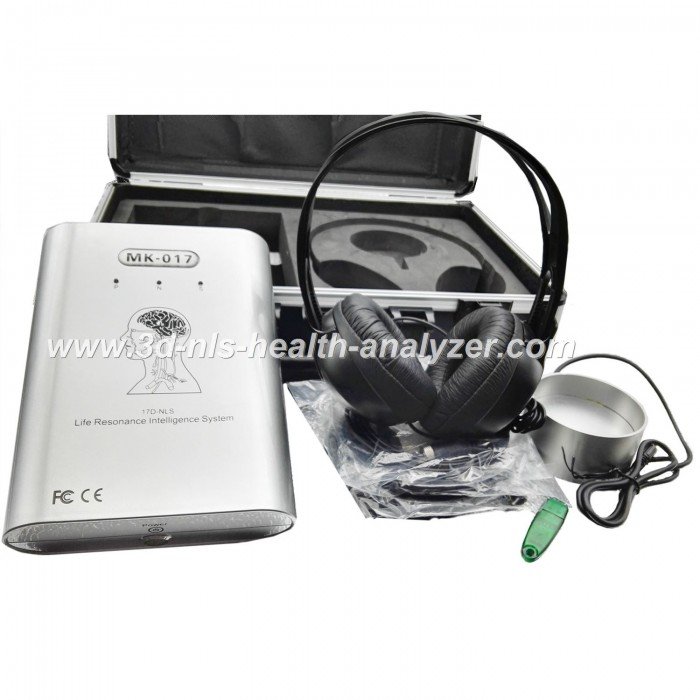How to scio biofeedback training



What is scio biofeedback?

Chances are you have used biofeedback yourself. You’ve used it if you have ever taken your temperature or stepped on a scale. The thermometer tells you whether you’re running a fever, the scale whether you’ve gained weight. Both devices “feed back” information about your body’s condition. Armed with this information, you can take steps you’ve learned to improve your health. When you’re running a fever, you go to bed and drink plenty of fluids. When you’ve gained weight, you resolve to eat less and exercise more.
Clinicians rely on complicated biofeedback machines in somewhat the same way that you rely on your scale or thermometer. Their machines can detect a person’s internal bodily functions with far greater sensitivity and precision than a person alone can. This information may be valuable. Both clients and practitioners use it to gauge and direct the progress of treatment.
For clients, the biofeedback device allows them to “see” or “hear” activity inside their bodies. One commonly used type of machine, for example, picks up electrical signals in the muscles. It translates these signals into a form that clients can detect. It triggers a flashing light bulb, perhaps, or activates a beeper every time muscles grow tenser. If clients want to relax tense muscles, they try to slow down the flashing or beeping.
Like a pitcher learning to throw a ball across a home plate, the biofeedback trainee, in an attempt to improve a skill, monitors the performance. When a pitch is off the mark, the ballplayer adjusts the delivery so that he performs better the next time he tries. When the light flashes or the beeper beeps too often, the biofeedback trainee makes internal adjustments, which alter the signals. The biofeedback practitioner acts as a coach, standing at the sidelines setting goals and limits on what to expect and giving hints on how to improve performance.

The Beginnings of scio biofeedback
The word “biofeedback” was coined in the late 1960s to describe laboratory procedures then being used to train experimental research subjects to alter brain activity, blood pressure, heart rate, and other bodily functions that normally are not controlled voluntarily. At the time, many scientists looked forward to the day when biofeedback would give us a major degree of control over our bodies. They thought, for instance, that we might be able to “will” ourselves to be more creative by changing the patterns of our brainwaves. Research has demonstrated that biofeedback can help in the treatment of many diseases and painful conditions. It has shown that we have more control over so-called involuntary bodily function than we once thought possible. But it has also shown that nature limits the extent of such control. Scientists are now trying to determine just how much voluntary control we can exert.
How is scio biofeedback Used Today?
Clients usually are taught some form of relaxation exercise. Some learn to identify the circumstances that trigger their symptoms. They may also be taught how to avoid or cope with these stressful events. Most are encouraged to change their habits, and some are trained in special techniques for gaining such self-control. Biofeedback cannot cure disease or by itself make a person healthy. It is a tool, one of many available to health care professionals. It reminds physicians that behavior, thoughts, and feelings profoundly influence physical health. Biofeedback helps both clients and doctors understand that they must work together as a team.
Clients’ Responsibilities
Biofeedback places unusual demands on clients. They must examine their day-to-day lives to learn if they may be contributing to their own distress. They must recognize that they can, by their own efforts, remedy some physical ailments. They must commit themselves to practicing biofeedback or relaxation exercises every day. They must change bad habits, even ease up on some good ones. Most important, they must accept much of the responsibility for maintaining their own health.


How Does scio biofeedback Work?
Most clients who benefit from biofeedback are trained to relax and modify their behavior. Most scientists believe that relaxation is a key component in biofeedback treatment of many disorders, particularly those brought on or made worse by stress. Their reasoning is based on what is known about the effects of stress on the body. In brief, the argument goes like this: Stressful events produce strong emotions, which arouse certain physical responses. Many of these responses are controlled by the sympathetic nervous system, the network of nerve tissues that helps prepare the body to meet emergencies by “flight or fight.”
The typical pattern of response to emergencies probably emerged during the time when all humans faced mostly physical threats. Although the “threats” we now live with are seldom physical, the body reacts as if they were: The pupils dilate to let in more light. Sweat pours out, reducing the chance of skin cuts. Blood vessels near the skin contract to reduce bleeding, while those in the brain and muscles dilate to increase the oxygen supply. The gastrointestinal tract, including the stomach and intestines, slows down to reduce the energy expensed in digestion. The heart beats faster, and blood pressure rises.
Normally, people calm down when a stressful event is over especially if they have done something to cope with it. For instance, imagine your own reactions if you’re walking down a dark street and hear someone running toward you. You get scared. Your body prepares you to ward off an attacker or run fast enough to get away. When you do escape, you gradually relax.
If you get angry with your boss, it’s a different matter. Your body may prepare to fight. But since you want to keep your job, you try to ignore the angry feelings. Similarly, if on the way home you get stuck in traffic, there’s nothing you can do to get away. These situations can literally make you sick. Your body is prepared for action, but you cannot act.
Individuals differ in the way they respond to stress. In some, one function, such as blood pressure, becomes more active while others remain normal. Many experts believe that these individual physical responses to stress can become habitual. When the body is repeatedly aroused, one or more functions may become permanently overactive. Actual damage to bodily tissues may eventually result.
Biofeedback is often aimed at changing habitual reactions to stress that can cause pain or disease. Many clinicians believe that some of their clients have forgotten how to relax. Feedback of physical responses such as skin temperature and muscle tension provides information to help clients recognize a relaxed state. The results of a biofeedback session may also act as a kind of reward for reducing tension. It’s like a piano teacher whose frown turns to a smile when a young musician finally plays a tune properly.
Biofeedback is generally defined as the presentation to a person of ongoing biological information, such as heart rate, so that he or she can become aware of inside-the-skin behaviors. Biofeedback training means using the information in learning how to self-regulate the biological process being displayed.


| |||||||||||||||||||||||||||||||||||||||||||||||||||||||||||||||||||||||
| |||||||||||||||||||||||||||||||||||||||||||||||||||||||||||||||||||||||
scio biofeedback training
| Our current comprehensive educational programs will offer attendees with the following: (1) Working knowledge of the application and use of the SCIO Biofeedback Device; (2) A basic, intermediate and advanced understanding of successful navigation through the CLASP32 software program; (3) Accreditation as a Certified Biofeedback Technician or Quantum Biofeedback Specialist through The Quantum Centre (4) Building a successful Practice. The Academy will be concentrated and focused. Our goal at the Academy is to provide new users with an opportunity to purchase their SCIO and get completely up and running after completing the six-day program. We offer a “one-stop-shop” to cover all of the basics in addition to obtaining accreditation. Other Facts: (2) The base program will be instructed by an Certified Instructor; (3) Extra events such as promoting your practice and basic computer tips are offered. (4) After passing the Biofeedback Certification exam, you can become Professionally Certified. Other arrangements can be made to attend the program or portions of this program, for a proportional fee. Please contact us for details! – Click Here to read some clarifications of some key points to remember about the certification process. Please remember that the certification process is an “optional” process, not mandatory or required, but highly recommended. Biofeedback is de-regulated and therefore, at the current time, certification is not necessary to operate the SCIO. If you do not have previous experience working as a practitioner in a health related field you will only receive certification as a Certified Biofeedback Technician. In order to qualify for a CBS (Certified Biofeedback Specialist), please click on the above link “Click Here” to see the specific requirements for this designation. Also, you are required to take a Human Anatomy and Physiology certified course. A comprehensive Human Anatomy and Physiology course is available through this website. However, in order to receive the CBS certification (Certified Biofeedback Specialist) you must have certification as a CBT, (Certified Biofeedback Technician), please see Beginner training. However, in order to receive the QBS certification (Quantum Biofeedback Specialist) you must have certification as a CBT, (Certified Biofeedback Therapist), please see Beginner training. | |
Beginner training includes:
| Intermediate/Advanced training includes:
|



Sale Cousultant : Mrs Lucy | Sale Consultant : Mr Mark |












